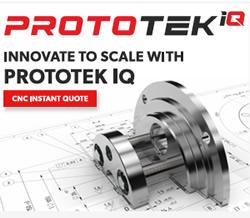Companies, employees not quite ready for cognitive technology wave of robotics, AI, machine learning
Microscan Visionscape® GigE Camera Performs Precision Measurement of Apertures in Digital Camera Housing at Foxconn
'UK manufacturers fail to understand Industry 4.0'
SME Launches High School Membership Program to Build the Manufacturing Workforce Pipeline
FIRST 3D TOOLS PRINTED ABOARD SPACE STATION
Midea makes bid for robotics maker Kuka official
Transforming 64-Bit Windows to Deliver Software-Only Real-Time Performance
MIT Food Computers
The Additive Manufactured Excavator Design Competition
How Big Area Additive Manufacturing is Enabling Automotive Microfactories
Computational Hydrographic Printing
Direct Marking for FDA UDI Compliance
Basic Assembly Skills Are as Important as Ever, Even in This Technology-heavy Era
Carnegie Mellon Taps Private Gift for Engineering Simulation Center
Consider This When Buying a New VMC
Records 2596 to 2610 of 2892
First | Previous | Next | Last
Featured Product

